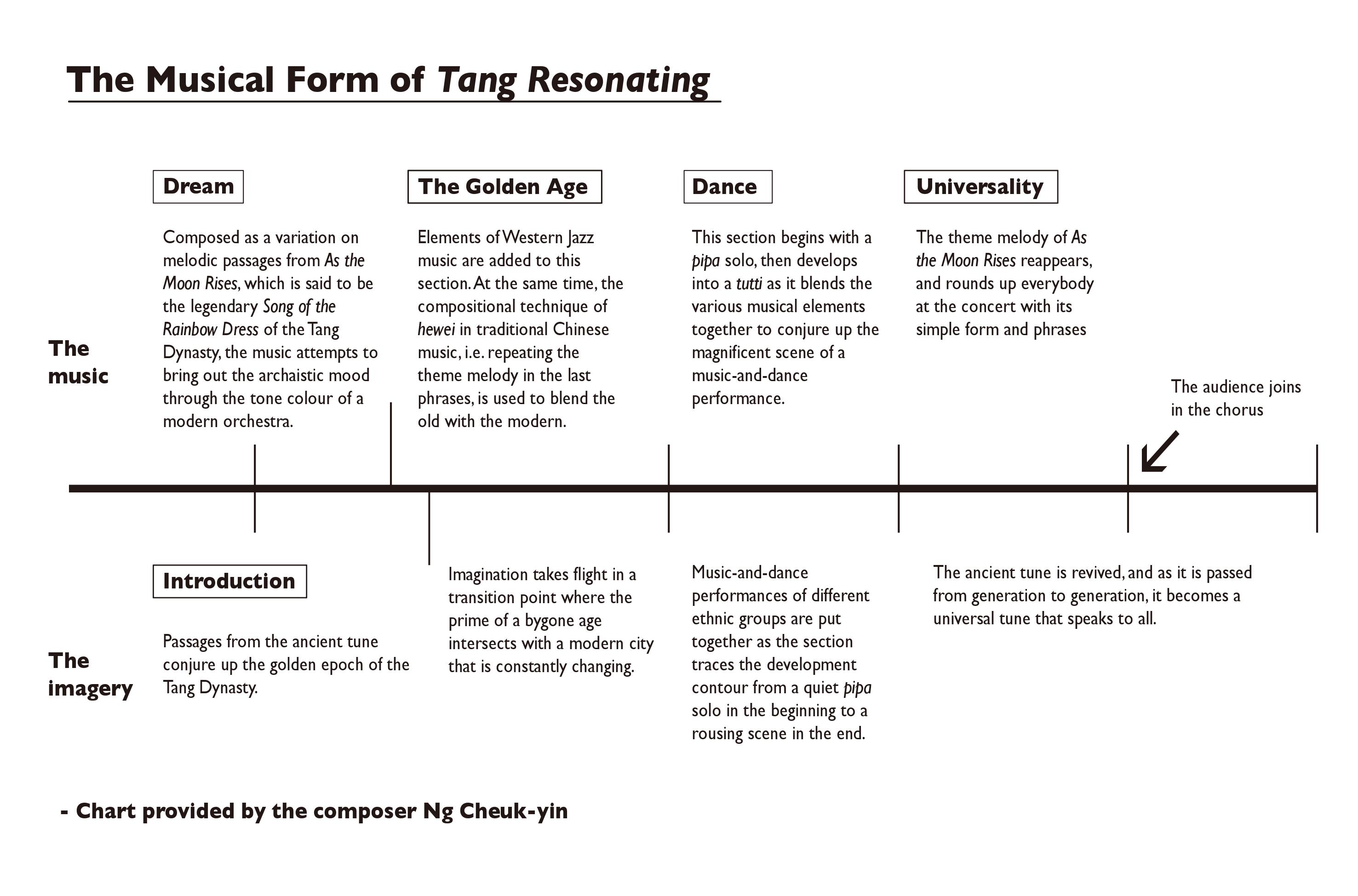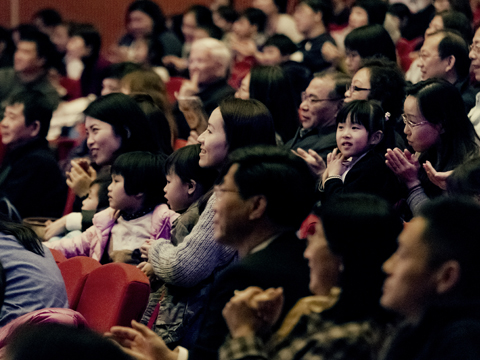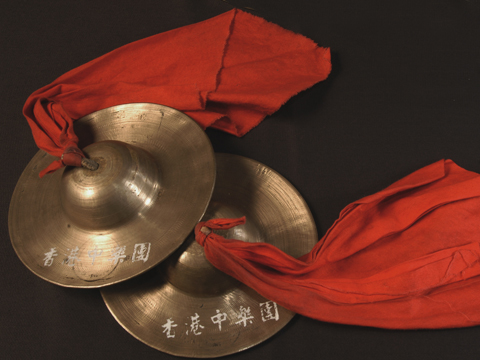2019 HKCO Mainland Tour - Programme Notes
The 21st China Shanghai International Arts Festival Hong Kong Cultural Week (1-3/11)
and Festival Hong Kong 2019 - A Cultural Extravaganza@Shanghai
Opening Performance
‘A Cosmopolitan Symphony’
1/11/2019 (Fri) 7:30 pm
Main Hall, Shanghai Symphony Hall
Song of the General Ancient Melody Arr. by Peng Xiuwen
The melodic material of this work is derived from the qupai (set tune) originally used in operatic tune as an introduction or to set the mood for grand battle arrays. It is a traditional wind and percussion piece of southern Jiangsu Province. With the soul-stirring, spirit-lifting sounds of drums and horns, and the robust blares of the suonas, gongs and drums, the music conjures up the victorious home-coming of a general surrounded by his army of soldiers and calvary.
The orchestration is a fine exemplification of the many levels of sounds performed by the two categories of gong and drum music, typically called ‘the bold school’ and ‘the refined school’. As wave after wave of music ride on each other, they create a highly structured architecture. Another important aspect of the work is its contrapuntal use of interchanging tonalities, commonly used in Chinese folk music. The transposing gives this version brightness as well as a new touch.
Follow the Pagoda Tree to Trace the Roots of Our Ancestors Zhao Jiping
The musical thoughts are delicately told in the music, appearing first in the introduction and echoed in the last section. The soulful lyricism of the adagio tells of heartfelt yearnings for the native land. The allegretto in the middle section is full of emotive nuances, and vividly captures the joy of homecoming.
Eco-Huqin and Orchestra Big Tree Ng Cheuk-yin (Commissioned by the HKCO / Shanghai Premiere)
The first movement: The Island (Zhonghu)
The second movement: City Lights (Erhu)
The third movement: The Fire Dragon (Gaohu)
The fourth movement: Keeping Watch (Erhu)
There are many big trees in my neighbourhood. Over the years, they have braved numerous storms, witnessed the many historic changes, and gone through the highs and the lows of Hong Kong, yet I can see that they are still growing strong and flourishing. I therefore decided to pick this as a befitting image of the theme of the opening concert of the Hong Kong Chinese Orchestra’s 40th Anniversary Orchestral Season – ‘Forty Years with Hong Kong’ in 2017. I also used ‘Big Tree’ as the title of my new work. The instrumentation for the premiere used the zhonghu, erhu, gehu, sanxian and suona as the lead instruments. Later I revised it to be a concerto for gaohu, erhu, zhonghu and orchestra – and this is what you are going to hear in this concert this evening. The music is in four movements – The Island, City Lights, The Fire Dragon and Keeping Watch, performed on eco-gaohu, eco-erhu and eco-zhonghu developed by the HKCO. Each movement is like a mini concerto allowing for a dashing bravura display of virtuosity. From a simple, modest beginning to dazzling prosperity, the musical narrative continues to develop until it comes to a contemplative, hopeful close.
— - Ng Cheuk-yin
* The ensemble work was commissioned by the HKCO and world premiered in September 2017 at the concert ‘Forty Years with Hong Kong’ in the Hong Kong Cultural Centre Concert Hall, under the baton of Yan Huichang.
Ng Cheuk-yin* Composer 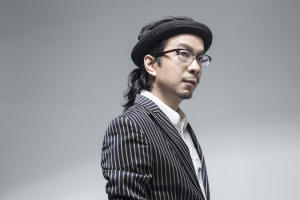
Ng Cheuk-yin is a composer, music producer,
sheng performer and
a cappella artist.
Ng is Hong Kong Sinfonietta’s first Artist Associate, music director of the fusion group SIU2 and a co-artistic director of the
a cappella choral theatre company, Yat Po Singers. After receiving a post-graduate degree from the Music Department of the Chinese University of Hong Kong, he went on to study Japanese at the International Christian University in Tokyo and Jazz Music at Codarts in the Netherlands.
In 2012, Ng received Award for Best Artist from the Hong Kong Arts Development Council. In 2009 and 2013, Ng received the Best Serious Composition in CASH Golden Sail Music Awards by the theatrical choral concert ‘Rock Hard’ and double
sheng concerto
Before the City Collapses respectively. In the following year his choral work
Singing Voices of the World was awarded the CASH Golden Sail Most Performed Works Award 2013 (Serious Music).
Ng’s works range from chamber and orchestral works to electronic music; from rock music to musicals; from choral works to pop songs and music for crossover bands and ensembles.
Ng’s major orchestral works include the double sheng concerto Before the City Collapses, sheng concerto for Chinese orchestra The Seventh Month, drumset concerto Fly, Chinese orchestral work Tang Resonating and Chinese percussion concerto White etc.
Other compositions by Ng include music for dance drama spectaculars
L'Amour immortel,
Lady White of West Snake and
Di Zi Gui; music for the concert ‘Herbal, Vocal or Motional’, a crossover collaboration between Yat Po Singers and the Hong Kong Chinese Orchestra; and Yat Po Singers’ productions
Requiem HK,
Pica Pica Choose,
This Victoria Has No Secret, and
Sing Sang Sung. Other genre types include the film score for the McDull movie,
Pork of Music; choral works
Before We Grow Up,
Singing Voices of the World,
Music of Love and
Ears in Heaven; and pop songs
Under the Cherry Blossom Tree and
The Way We Grew by Hins Cheung and
Can’t Get Happy by Eason Chan.
* Photo Credit: Andrew@CoffeeHouse
A Sorrowful Tune Zhu Jian'er
The music opens with a basso ostinato that imitates a staggering gait of a person in distress, and from there the simple yet mournful theme appears. After a solo passage, the orchestra joins in. It is the voices of the people telling their own stories. The theme is echoed and supported by two subordinate subjects.
The theme of pathos is repeated twelve times on different instruments in different tonality. Emotions are heightened as more instruments join in, climaxing to a sky rocking, earth-shaking break point before coming to a quietly reverberating close.
— Zhu Jian’er
* he music was commissioned and world premiered by the HKCO in April 2006 at the concert ‘An East-West Crossover’ held at Hong Kong City Hall Concert Hall, under the baton of Yan Huichang
** The exotic instruments used in this piece:
Xun (Sun Yongzhi)
For Four Instruments and Chinese Orchestra
Next Station Moon Ng King-pan (Commissioned by the HKCO / Shanghai Premiere)
Facts: The Chang'e-4 moon lander, the second phase of China's Lunar Exploration Programme, made a successful moon landing in January 2019. It marked the first successful mission in human history to land on the far side of the moon.
Fantasy: This was followed by probing of the moon surface by the Yutu-2 lunar rover. Results yielded revealed that there is a vast space beneath the surface. So, in the subsequent third and fourth phases of the moon programme, more thermal probes were conducted in different parts of the moon. Some physical movements under the surface layer were detected, which further confirmed that there is civilization in the subterraneous part the moon. The aerospace agency has decided that China's first manned lunar landing project will use music to make the first encounter of the Fifth Kind with non-earthlings. It is supposed to be a gesture of goodwill and a demonstration of the arts and culture of the earthlings. As for the human candidates for the first moon landing, there will be members of the Hong Kong Chinese Orchestra. The present work is created in anticipation of this adventure, as we share a culture hot pot of music East and West on the moon theme.
Next Station Moon is a work that brings together humankind’s heartfelt yearning and wishful imaginings of the moon in the music of China and the West. In exploring the ‘moon mission à la Chinese style’, the composer has cooked up a chop-suey dish of moon-related elements of music cultures of the world for interesting listening.
The original version of this piece was written for Chinese orchestra and piano quartet. The world premiere was performed by the Hong Kong Chinese Orchestra and the Janoska Ensemble at the concert, ‘When Janoska Meets HKCO’, held on 12 July, 2019 at the Hong Kong Cultural Centre Concert Hall, with Chew Hee Chiat conducting. The arrangement you hear tonight is for Chinese orchestra and four instruments (
erhu, gaohu, yangqin, sheng).
─ Ng king-pan
* The exotic instruments used in this piece:
Gudi (Choo Boon Chong),
Bawu (Wu Chih-ting),
Xiao (Chan Chi Yuk, To Fung Lim)
Ng King-pan Composer 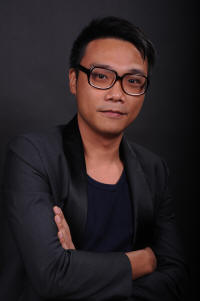
Ng king-pan is active in the classical and pop music industry, playing the multiple roles as composer, arranger, performer, conductor, music director and band leader. In recent years, he plays an active role in composing for Chinese orchestras and philharmonic orchestras in Hong Kong and Taiwan. Ng is a Doctor of Philosophy – Music Composition, and his field of research is Chinese music composition.
Ng started his music training in piano,
erhu and violin at a young age. In the 1990s, he received comprehensive training at the Music Office as well as various privately-run song art clubs, choral groups, dance troupes, Chinese orchestras and philharmonic orchestras. When he was in secondary school, he forayed into music composition, arrangement and improvisatory performance. He studied at the Hong Kong Baptist University, the University of Melbourne in Australia, the Musikhogskolan i Piteå in Sweden, and the University of Hong Kong. His mentors included Yu Jingjun, Brenton Broadstock and Chan hing-yan. His composition had won him multiple international awards while he was still studying. His symphonic piece,
Merah Putih (‘Red and White’), which was based on a highland folk song in Indonesia with the same title, won the 3MBS Reading Australian National Composer Award in 2002. He has been playing and arranging music for major pop concerts and record pop albums since 2005, with pop concert appearances totaling a few hundred. In 2014, under the helpful guidance of Professor Chan Hing-yan, Ng completed his doctoral thesis entitle
d Composing for Chinese Instrumental Ensemble: a Practitioner's Perspective. Some of his notable activities and works in recent years were as follows: in 2019, he went to Taipei as arranger and studio recording conductor for Lo Da-Yu’s new works. In 2018, commissioned by the Hong Kong SAR Government, he created and produced the video-audio of Theme Music of the 40th Anniversary of the Economic Reform. In April the same year, he was the sole arranger and conductor for Jeff Chang’s live concert at the Beijing Concert Hall with the Moscow Symphony Orchestra. In 2017, he arranged and conducted the record production of the cello concerto album, Cello Loves Disney by young cellist, Nana Ou-Yang and Bulgarian National Radio Symphony Orchestra. Between 2011 and 2018, he was music director of the National Day variety show in Hong Kong.
Violin Concerto The Butterfly Lovers He Zhanhao and Chen Gang Arr. by Ng Tai Kong
The violin concerto is composed in 1959. It is inspired by the Chinese folklore The Butterfly Lovers and incorporates music of the Shaoxing Opera of Zhejiang Province.
The composers have used the sonata form as in a western concerto. The three main parts of the story, A Brotherly Pledge at the Bridge, Ying Tai’s Refusal to Accept an Arranged Marriage and The Metamorphosis by the Grave, form the exposition, development and recapitulation in this composition.
1. Introduction and Exposition
The music opens with the strings softly setting the stage for a sunny spring day when birds are singing and flowers are in bloom. The dizi follows with the warbling of the birds, the mellow, romantic sheng. The violin appears and plays the poetic love theme in the brilliant high register before it enters into dialogue with the gehu. Liang Shanbo and Zhu Yingtai are making a pledge to become sworn ‘brothers’. It is followed by a cadenza and then a lively rondo. The solo and the orchestra appear in alternating dynamic passages that suggest moments of bliss for the two young persons during their three years of studies. An adagio appears, bringing in the love theme again. It is time to part, and the two find it hard to say goodbye.
2. Development
Part Two opens with an ominous passage with the droning of the gongs, slow, sombre melodies in the low register, and strings that shiver in fear. Tragedy strikes. The solo violin enacts Yingtai’s jitters and heartbreak in free tempi, a theatrical device often found in Chinese opera. She refuses to submit to her father’s wish of an arranged marriage, her vehement objection and tearful wailing being vividly conveyed. Yingtai and Shanbo’s heartrending reunion is also captured in the dialogue between the solo violin and the gehu. The mood quickly sinks into tragic helplessness when Yingtai cries her heart out in front of Shanbo’s grave, with dramatic effects heightened by the use of different beat patterns from Chinese opera (the quickening daoban in Peking Opera, and the throbbing xiaoban in Yue Opera). The gongs play out another unremitting droning until there is the sudden dramatic climax when the grave opens, and Yingtai throws herself into it.
3. Recapitulation
The ethereal notes of the dizi take us to an idyllic land. The memorable love theme reappears. The two lovers have turned into butterflies, and they dance among the flowers as a pair, never to part again.
'Peony Pavilion and The Palace of Eternal Life'
by Zhang Jun and Hong Kong Chinese Orchestra
2/11/2019 (Sat) 7:30 pm
Opera Hall, Shangyin Opera House
Peony Pavilion Composed and arranged by Gu Guanren based on the vocal music of the original Kunqu opera
The music is an aria from The Peony Pavilion, a Kunju written by Tang Xianzu (1550-1616), a playwright of the Ming Dynasty. It has become so well-known that it is considered a classic. The singing narrative by the actor in xiaosheng (young civil male) role takes the angle of the male protagonist in the story, Liu Mengmei, and describes how he finds the portrait of Du Liniang and addresses the lady in it to come out and meet. The expressive rapport between the Kunju vocal in a male voice and the Chinese orchestra is a joy to the ear. The aria is in nine sections, as follows:
1. Overture
2. Introduction ‘Who would feel tormented by spring as I?’
Who would feel tormented by spring as I?
On my sojourn, I would not think of anything else.
3. Jin-Chan-Dao ‘The doors are locked’
The doors are locked. Behind it is a secret fairyland, but how run-down it looks! Rising from the mist are the dilapidated pavilion and the painted boat on the water.
A sash flutters on the deserted swing.
It does not look like it’s been ravaged by the fires of war, but how messy it is! Surely some grieved soul, now far gone, must have had many sad memories here?
Try as one may not to be moved, yet the rockery seems to beckon and call.
4. Shan-Po-Yang ‘Passions thrive in spring without a cause’
Passions thrive in spring without a cause; suddenly I feel a secret discontent.
Lingering, to whom can I tell my fervent wishes?
What torture! To waste this life, except to Heaven invoke?
5. Shan-Tao-Hong ‘Round the corner, to the railing by the peony’
Round the corner, to the railing by the peony,
Pressed against the rockery.
Let me open the fastening at your neck,
Pull loose the sash at your waist.
Pull up the sleeve and grit it as in pain.
Bear a while, and in loving caress we shall drift into gentle slumber.
You and I have met somewhere in time, vividly we beheld each other,
Could it be, when finally we meet, we are at a loss for words?
6. Talking to the Portrait (Spoken line delivery and music)
7. ‘If only the moon that set would rise again, the lamp would be lit again’
If only the moon that set would rise again, the lamp would be lit again.
If only the moon that set would rise again, the lamp would be lit again.
8. Jiang-Er-Shui ‘My heart is fleetingly drawn’
My heart is fleetingly drawn to the side of the plum tree.
Look at this flora waiting to be loved, they live or die at man’s will,
With sighs and moans unheeded.
Let my fragrant soul stay here, on dreary, rainy days,
Ah! Dear heart,
Just keep its place until it can keep company
with the roots of the plum tree!
9. Finale
The Palace of Eternal Life Composed and arranged by Jin Fuzai based on the vocal music of the original Kunqu opera
The first movement: Memories of Tang in its Most Glorious
Duan-Zheng-Hao
It was I that had brushed aside her pledge and betrayed her deep trust.
The love birds were so cruelly separated.
What promise it was that we would stay together this life or next,
Who knew that this evil spell would suddenly strike!
The second movement: The An-Shi Uprising
Dao-Dao-Ling
All those carriages and horses are crowding the roads and I can only lean out and look!
Those people keep on giving me words of advice and bad mouthing non-stop,
Then holding daggers and halberds they swarm around her,
Forcibly putting her life at stake as she cowers in fear!
How painful it is to watch!
How dreadful it is to watch!
It all happens in a flash, and I am left all by my pitiable self!
Tuo-Bu-Shan
Shamefully I cover my face and mourn,
Not being able to save my beauty!
It’s all because I am so clueless,
Don’t! Lay her down gently with care!
The third movement: Song of the Rainbow Dress
Qi-Yan-Hui
Hand in hand we walk in the flowering bushes to allay our heavy hearts,
Under the pavilion where the cool breeze blows, the lotus dance above the water.
We love the quiet of the shade under the parasol trees,
A lush green surrounding the zig-zag corridor.
In our love nest, she clings to me like a dainty swallow,
We close our eyes and sleep like the mandarin ducks on the silvery pond.
Xiao-Liang-Zhou
If only I had put myself between her and the challengers,
She would not have been accused of committing a serious offence,
What if she had? Who cares?
That way we could have stayed in one grave together forever!
The fourth movement: At Maweipo
Yao-Pian
I am left to myself, though safe and sound,
What is there left in life ahead?
Except for endless tears and a thousand sorrows,
How can this grievous lament be ever revoked?
The fifth movement: Everlasting Regret
Qi-Yan-Hui
Amidst the glorious blooms I miss one face,
Heavenly she looked in her billowing drapes and fresh make-up,
Even the legendary beauty Zhao Feiyan was not her match.
With her famously ravishing looks and her sweet smile,
This emperor could not take his eyes off her.
We stood in the spring breeze and told it to shed its woes,
As we leaned together by the railings at the Pavilion of Fragrant Wood.
The Emperor Holds Court
Coda
I cannot hold back my tears as I leave the new shrine,
The pain does not go away as I walk towards the palace.
I lift my eyes to the last rays of the sun tinting the evening clouds,
Pining in vain.
My dear lady! Let me pour out tonight…
To you my heart filled with tears of love, in my dream.
The ‘Impossible’ Fantasia
3/11/2019 (Sun) 3:00 pm
Shanghai City Lawn Music Square
The Sun (The First Movement of The Age of the Dragon) Kuan Nai-chung
The dragon is a totem of the Chinese race, and the first year of the 21st century happens to be the Year of the Dragon on the Chinese horoscope. This happens, it is said, not once in a thousand years but once in three thousand years, and I am one of the lucky ones to witness this. A new millennium brings new hopes and expectations. As a composer, I think I would rather translate my hopes and expectations into music. In The Age of the Dragon, I have put two soloists in the lead: one Chinese percussion and the other, western, in an attempt to demonstrate the soul and the spirit of the Chinese people.
The piece is in four movements. The first is The Sun - a symbol of light and heat and of faith and power. The second is The Moon - the watery moonlight is a reflection of the deepest feelings. The third is The Stars - twinkling and fascinating, they symbolize wit and hope and have brought wisdom to numerous sages. The fourth is The Earth - our mother and the home of all the people in the world. It is believed the Earth will get smaller and smaller in the new millennium while people’s hearts will grow closer and closer to one another. I would count this as my only wish on the eve of the new age.
- Kuan Nai-chung
* This music was commissioned by the HKCO and premiered at ‘The Age of The Dragon’ concert held at Hong Kong City Hall Concert Hall in December 1999, guest conducted by Kwan Nai-chung.
** Only the first movement is performed in this concert.
Little Star Fantasia Ng Cheuk-yin
This is yet another adaptation of the children’s song in France, Ah, vous dirai-je, Maman, one of the most popular previous versions being Twinkle, Twinkle Little Star. It made a highly successful premiere in July 2018, in the Hong Kong Chinese Orchestra musical show in Hong Kong, ‘ Wish I Could Make a Wish – The Theatre Concert of Jimmy Liao’.
Background to the story: A little boy finds a big teapot on the beach. When all other children think it is the magic lamp and excitingly start making wishes, he alone thinks that there is nothing called “magic” in the world, nor is there such a thing as a “magic lamp” - until one day, when he is about to throw away the big teapot, the magic lamp actually appears! It shows the little boy that it is possible to make wishes come true, but only with courage, and no dreams in this world can be realized without making efforts…
Medley Love Lingers On (Excerpts) (Shanghai at Night, Three Years and Rose Rose I Love You) Arr. by Phoon Yew-tien
This is an arrangement commissioned by the Hong Kong Chinese Orchestra. A medley made up of seven most popular golden oldies, it opens with Shanghai at Night. The description of Old Shanghai with its illuminations and thriving night life begins our journey down memory lane. After some twists and turns along the way, we come to the plaintive Ten Sighs. In destitute resignation, a lady of the night softly tells her story. Next is the equally emotion-laden tune Three Years. The forlorn, helpless feelings are seasoned with the bitter-sweet taste of love. The mood changes with the timely appearance of the lively and refreshing Drizzling Rain. On an even lighter note, the Crescent Moon and the succeeding Nocturnal Aroma and Rose Rose I Love You bring the whole piece to the climax. Phrases of these oldies are recapitulated through repetition and canonic counterpoint to further heighten the mood before the music comes to an end.
- Phoon Yew-tien
* The arrangement of this music was commissioned by the HKCO and premiered in February 2000 at the concert ‘Y2K Lovers’ Concerto’ held at Hong Kong Cultural Centre Concert Hall, under the baton of Yan Huichang.
** Only Shanghai at Night, Three Years and Rose Rose I Love You are performed in this concert.
Cantonese Tunes Medley Traditional Short Pieces Arr. by Qiu Yongji Orch. by Peng Jiguang and Qiu Yongji
Early Cantonese xiaodiao (short tunes) originated from short tunes “imported” from other provinces or from other music genres. This medley is made up of four such “imported” tunes popular in the 1910’s and 1920’s. All in the yu mode and similar in mood, they are entitled Getting Drunk at the Pavilion of a Hundred Flowers, Chan Sai Mei Denies His Wife, The Gracer and The Fairy Tending Sheep. The music has been orchestrated in the “broad bow” style, featuring instruments like the Cantonese erxian, changhouguan, duanhouguan, dasanxian and xiaosanxian.
* The arrangement of the music was commissioned by the HKCO and premiered in March 2000 at the ‘Cantonese Music & Cantonese Opera’ concert held at Hong Kong Cultural Centre Grand Theatre, under the baton of Yan Huichang.
** The exotic instruments used in this piece: Erxian (Zhang Chongxue), Zhutiqin (Mak Ka Yin), Xiaosanxian (Chan Hiu Fung)
A Medley of Themes from Television Drama Series Joseph Koo
The suite is made up of ten theme songs from hit drama series of the 1970s and 1980s in Hong Kong, all composed by Joseph Koo. They are: Fatal Irony, The Legend of the Book and Sword, The Romantic Swordsman, Heaven Sword and Dragon Sabre, The Good, The Bad, and the Ugly, The Legend of the Condor Heroes and Luk Siu Fung. The popularity of the dramas spread from Hong Kong to all over Southeast Asia.
The moods in these theme songs are as varied as the subject matters of the drama series themselves, with the emotional spectrum ranging from patriotic passion to forlorn longing for love. They marked an era when romance dominated in stories that celebrated love in its multifarious forms and were very much a part of life for the people. They also made up an indelible part of collective memories and emotions for those growing up in that era.
* This music was commissioned by the HKCO and was premiered at the concert ‘Golden Hits with the Hong Kong Chinese Orchestra’ held at the Hong Kong Coliseum in October 1986, under the baton of Kuan Nai-chung and Joseph Koo.
** The exotic instrument used in this piece: Xiao (Choo Boon Chong)
Medley Impossible Medley Arr. by Ng King-pan
This medley for Chinese orchestra is made up of four themes from some of the classics in films and on television in the ‘spy and special agent’ genre. The tone is therefore highly entertaining. In writing this arrangement, I am exploring new grounds for the Chinese orchestra, in terms of performance style, performing method and orchestral voice. Musically the work is a hybrid of several genres, played on Chinese musical instruments to take the audience across the time, space and cultural divides.
- Ng King-pan
* The arrangement of this music was commissioned and premiered in March 2014 at the concert ‘Chinese Music with All That Jazz’ by the HKCO, under the baton of Chew Hee Chiat.
For the copyright information, please visit the Chinese version of HKCO website.
‘Liu Bang, Xiang Yu and the Terra Cotta Warriors’
the HKCO Concert
5/11/2019 (Tue) 7:30 pm
Guanhanqing Grand Theatre, Baoding, Hebei
7/11/2019 (Thu) 7:00 pm
Big Hall, The New Harbin Concert Hall
9/11/2019 (Sat) 7:30 pm
Opera Hall, Linyi International Grand Theatre
Fantasia The Terra Cotta Warriors Peng Xiuwen
The excavation of the tomb of the First Emperor of Qin and the terra cotta warriors roused the world to attention. In the history of China, the First Emperor, in the span of ten years, between 230 and 221 BC, conquered the six dukedoms of Han, Zhao, Wei, Chu, Yan and Qi to form a unified China. However, the people were unable to bear his tyrannical rule and the Qin dynasty lasted only 13 years. This is not a piece about the terra cotta warriors, despite its title. It is meant to depict Qin soldiers who suffered immensely from the fact that they were on combat assignments year after year. They were always away from their homeland, and they missed parents, wives and children who longed for their return. Hence the “Fantasia” form. The work is in three movements:
1. Discipline is Strict in the Army: When Will the Emperor Get Tired of Traveling and Offering Sacrifices on Various Sacred Mountains?
The music begins quietly to describe the army in progress at dawn. Military horns are vaguely heard. The sound is heard from afar but is getting nearer and nearer, bringing out the theme of an ancient army advancing. The second theme in this movement is an expression of the soldiers' distress. The movement ends with a fanfare on both the wind instruments and the drums which signify the appearance of the Emperor and his entourage. Then the gongs and cymbals are sounded to stop the advance and to indicate that tents are to be pitched.
2. Spring Dreams: Soldiers Missing Their Wives
In the second movement, the music begins with depiction of the quiet of the night and the sound of wood blocks, which represents guards doing their rounds. In this quiet the weeping songs of soldiers are heard. It is the sound of men missing their homeland and very soon other soldiers are affected and induced to song. This brings up a chorus which gradually leads the men to a dream. The wood blocks are also meant to represent wives pounding garments when they are doing the laundry for their husbands. Here a haunting melody is heard on the zheng but, as the soldiers dream about being together with their families, the sound of a gong rudely breaks their dreams.
3. A Ten Thousand Mile March across Snowy Mountains
This features a reappearance of the theme of the first movement. The mood and the configuration of instruments, however, are all changed. The army is still in progress and the Emperor’s procession is as before. But a cold wind has risen and the sky becomes dark and cloudy. Snow begins to fall. At this time the music becomes somber and the military theme now appears in the tragically heroic horns. The whole work ends in heightened emotions.
* The exotic instruments used in this piece: Xiao (Choo Boon Chong), Xun (Sun Yongzhi)
Pipa and Orchestra King Chu Doffs His Armour Ancient Melody From the notation of Shen Haochu Compiled by Lin Shicheng Arr. by Kuan Nai-chung
This is one of the exemplary works of the ‘military category’ of pipa music. The earliest known score was found in Hua Qiuping’s Pipa Scores, and later was also included in Li Fangyuan’s Thirteen Sets of New Pipa Scores of the Northern and Southern Schools. The number of sections was also expanded. While Li attributed the piece to Wang Wei of the Tang Dynasty, there was insufficient proof of this. However, the score in Li’s collection has become the basis on which later arrangements were worked. It has a total of fifteen sections: 1. the camp drum; 2. assembly; 3. appointing the generals; 4. forming the squadrons; 5. the battle array; 6. marching forth; 7. in close combat; 8. the battle at Gaixia; 9. the Song of the Chu; 10. parting with Lady Yu; 11. the sound of drums, horns and armour; 12. the breaking through; 13. in close pursuit; 14. chasing away the horses; and 15. the victorious return.
As a representative work in the ‘Southern school’, this pipa piece is tuned to A, B, E, A (versus the more common A, D, E, A). The strumming therefore creates an unusual, ‘strung up’ sound. The music begins with the prelude to the famous battle that would determine the fate of two states, Chu and Han. With drums, horns and sounds of horses galloping, a magnificent scene at camp unfolds. Then the heroic image of the King of Chu is created through a succession of passages. He is cast as a great fighter and strategist. But with the turn of events, he suffers his downfall. The mood changes from heroic magnificence to tragic lament. After hearing the ‘Song of the Chu’ and bidding farewell to his favourite concubine, he cannot but have to meet his own end. Although he breaks through the enemy front – a point that marks the turn – he only manages to escape to Wujiang River, where, caught between the dead end and the pursuing enemies, he takes his own life, and the music comes to a tragic close.
The emphasis of the music is on the fall of a heroic figure rather than on the battle scene. It captures his psychological changes, his resignation to fate, and his loneliness. Although written with the intention of being a ‘variation’, the work is structurally complete with an opening, exposition, transition and close. It is a beautifully written piece for the pipa and demonstrates the advanced music culture of ancient China.
Gehu, Pipa, Sheng, Zhongruan and Orchestra Ambush on All Sides Ancient Melody Arr. by Li Cangsang and China Magpie Arr. and Orch. for Chinese Orchestra by Chew Hee Chiat
The Chinese traditional tune, Ambush on All Sides, gives an epic interpretation of the most famous battle in Chinese history between the states of Chu and Han. The earliest composition on this theme was collected in Pipa Scores, compiled by Hua Qiuping in 1818. The present arrangement for cello, pipa, sheng, guitar and the orchestra was commissioned by the HKCO and premiered in November 2008 at ‘Yo-Yo Ma & HKCO – 2008 New Vision Arts Festival’ concert in the Hong Kong Cultural Centre Concert Hall, under the baton of Yan Huichang, with cello by Yo-Yo Ma, pipa by Li Hui, sheng by Wu Tong and guitar by Liu Lin. In this concert, it will be performed with gehu, pipa, sheng and zhongruan.
* The exotic instruments used in this piece: Hailuo (Chan Chi Yuk, To Fung Lim), Xun (Chen Yi-wei), Haotong (Lu Yi, Yuen Kin Hei)
Tang Resonating Ng Cheuk-yin
The Tang Dynasty (618-907) may well be described as a golden age, whether socially or politically, domestically or externally. Cultural exchanges were at its peak, and China embraced the world with open arms. Today, the internet has also pushed global exchanges to an unprecedentedly high point. In music and art, there are no boundaries, no limitations in forms and formats, as genres and styles meet head on and exert reciprocal influence. As a result, new sounds have emerged. In this new golden age, should we be keep to our own, or should we welcome the world with open arms? Can we find the answers in the prime days of Tang?
With the legendary ‘ancient melodies’ of Tang as our point of departure, the music takes us through a time tunnel where we can freely shuttle back and forth between ancient worlds of East and West, where we can be in our cosmopolitan city at one point, and the ancient royal courts of China at another.

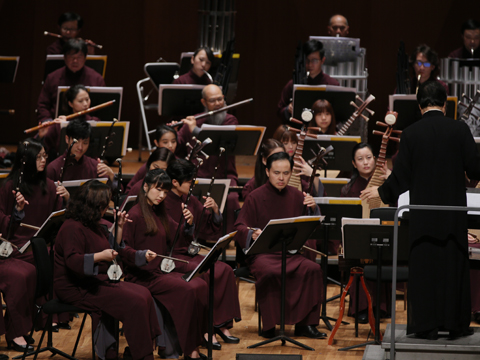

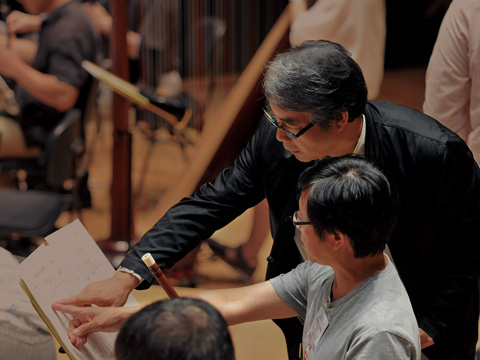

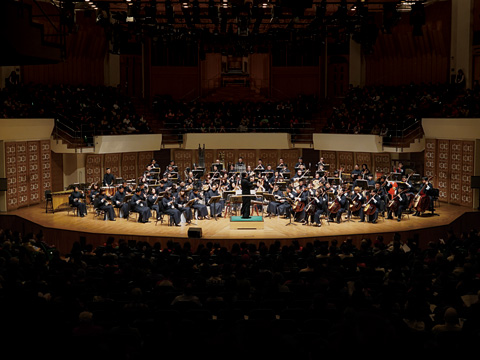

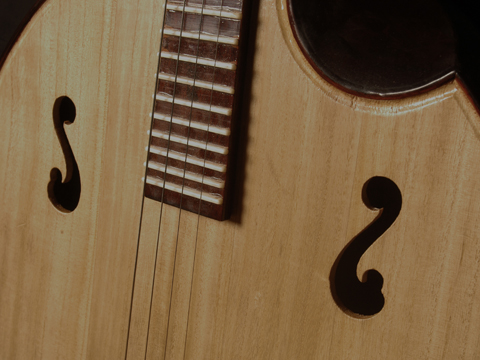

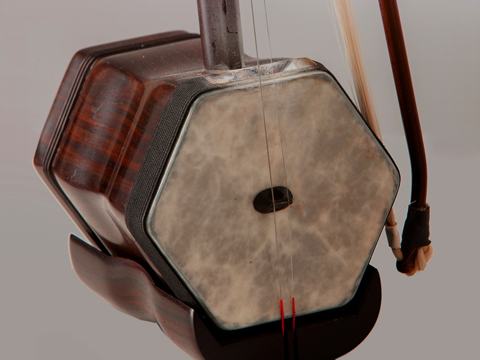

 Ng king-pan is active in the classical and pop music industry, playing the multiple roles as composer, arranger, performer, conductor, music director and band leader. In recent years, he plays an active role in composing for Chinese orchestras and philharmonic orchestras in Hong Kong and Taiwan. Ng is a Doctor of Philosophy – Music Composition, and his field of research is Chinese music composition.
Ng king-pan is active in the classical and pop music industry, playing the multiple roles as composer, arranger, performer, conductor, music director and band leader. In recent years, he plays an active role in composing for Chinese orchestras and philharmonic orchestras in Hong Kong and Taiwan. Ng is a Doctor of Philosophy – Music Composition, and his field of research is Chinese music composition.